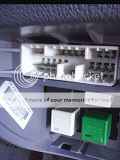redxm
Well-known member
Ive come up with an idea that may, or may not be a good thing.
Ditch the 350 Holley on my 221-2V build and go EFI.
The 4.0 AU engine on the floor of the shed has got me thinking...
I know the harmonic balancer will fit straight on to the 221 crank,not sure of installed 'depth' yet. With appropriate brackets the crank angle sensor will work.
This also opens up the possibility of a serpentine belt conversion.
Ive played with EFI a bit over the years. I converted my crossflow XF to efi years ago.
I have been involved in the build of 2 AU saloon cars so the wiring side of things is not an issue (Im also a radio technician in real life)
What I really want to know is, what would be a simple ECU to use. In the saloon cars we are restricted to the EMS Stinger 4. Down side to this is there is no feedback from the engine that will adjust the tune. We have a base map nutted out on the dyno, and add or subtract fuel trim to suit the track.
What I will probably do is a simple (think XE/XF) type system. MAP sensor, knock sensor and oxygen sensor. with a tuneable ECU this shouldnt be too hard to acheive??
Throttle body will be whatever I can come up with, but more than likely off an AU (as I have it). Injector choice, not sure yet. Screw in type might suit the build better as I can drill and tap the 2V manifold appropriately.
Ignition, not sure. Either go with the XF type dissy, or do I go for a coil pack setup?
What am I missing?
Ditch the 350 Holley on my 221-2V build and go EFI.
The 4.0 AU engine on the floor of the shed has got me thinking...
I know the harmonic balancer will fit straight on to the 221 crank,not sure of installed 'depth' yet. With appropriate brackets the crank angle sensor will work.
This also opens up the possibility of a serpentine belt conversion.
Ive played with EFI a bit over the years. I converted my crossflow XF to efi years ago.
I have been involved in the build of 2 AU saloon cars so the wiring side of things is not an issue (Im also a radio technician in real life)
What I really want to know is, what would be a simple ECU to use. In the saloon cars we are restricted to the EMS Stinger 4. Down side to this is there is no feedback from the engine that will adjust the tune. We have a base map nutted out on the dyno, and add or subtract fuel trim to suit the track.
What I will probably do is a simple (think XE/XF) type system. MAP sensor, knock sensor and oxygen sensor. with a tuneable ECU this shouldnt be too hard to acheive??
Throttle body will be whatever I can come up with, but more than likely off an AU (as I have it). Injector choice, not sure yet. Screw in type might suit the build better as I can drill and tap the 2V manifold appropriately.
Ignition, not sure. Either go with the XF type dissy, or do I go for a coil pack setup?
What am I missing?



